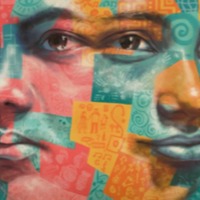
Kidane
There is an estimated 48,000 people living in modern slavery in Libya (GSI 2018). Libya is a major transit destination for migrants and refugees hoping to reach Europe by sea. Human trafficking networks have prospered amid lawlessness, created by the warring militias that have been fighting for control of territories since the toppling of Muammar Gaddafi in 2011. Highly organized trafficking and migrants smuggling networks that reach into Libya from Niger, Nigeria, Chad, Eritrea, Ethiopia, Somalia, Sudan, and other sub-Saharan states subject migrants to forced labor and forced prostitution through fraudulent recruitment, confiscation of identity and travel documents, withholding or non-payment of wages, debt bondage, and verbal, physical, and sexual abuse. In some cases, migrants reportedly pay smuggling fees to reach Tripoli, but once they cross the Libyan border they are sometimes abandoned in southern cities or the desert where they are susceptible to severe forms of abuse and human trafficking. Kidane traveled from Eritrea to Europe through smugglers, however he found himself trafficked by brokers and being locked inside a warehouse for two years. After being released from the trafficker’s camp, he and two friends, Abraham and Berhane, decided to cross the sea together. They were put out to sea in an old wooden boat that was leaking. They were three days at sea, with no food and no water to drink. Some of the passengers died. Today, the three friends are earnestly advising other people not to go on this dangerous journey. They say enough is enough, irregular travel through Libya should stop now.
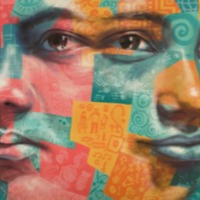
Andemariam
There is an estimated 48,000 people living in modern slavery in Libya (GSI 2018). Libya is a major transit destination for migrants and refugees hoping to reach Europe by sea. Human trafficking networks have prospered amid lawlessness, created by the warring militias that have been fighting for control of territories since the toppling of Muammar Gaddafi in 2011. Highly organized trafficking and migrants smuggling networks that reach into Libya from Niger, Nigeria, Chad, Eritrea, Ethiopia, Somalia, Sudan, and other sub-Saharan states subject migrants to forced labor and forced prostitution through fraudulent recruitment, confiscation of identity and travel documents, withholding or non-payment of wages, debt bondage, and verbal, physical, and sexual abuse. In some cases, migrants reportedly pay smuggling fees to reach Tripoli, but once they cross the Libyan border they are sometimes abandoned in southern cities or the desert where they are susceptible to severe forms of abuse and human trafficking. Andemariam, an Eritrean man, had been living and working in Sudan for over a decade when he was duped into taking the journey to Libya, where he’d been told there would be better employment opportunities. Andemariam and his friend were handed over to Libyan smugglers who imprisoned them in a store for two months before embarking on a difficult sea journey. Upon arrival in Italy, Andemariam had lost all his belongings, was sick, and was unable to find work. He later traveled to Germany to seek. medical attention At the time of the interview (2015) he was still waiting to hear about his refugee status.
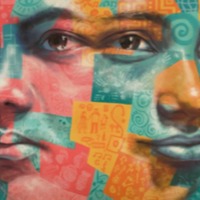
Abdirahman Hashi
There is an estimated 48,000 people living in modern slavery in Libya (GSI 2018). Libya is a major transit destination for migrants and refugees hoping to reach Europe by sea. Human trafficking networks have prospered amid lawlessness, created by the warring militias that have been fighting for control of territories since the toppling of Muammar Gaddafi in 2011. Highly organized trafficking and migrants smuggling networks that reach into Libya from Niger, Nigeria, Chad, Eritrea, Ethiopia, Somalia, Sudan, and other sub-Saharan states subject migrants to forced labor and forced prostitution through fraudulent recruitment, confiscation of identity and travel documents, withholding or non-payment of wages, debt bondage, and verbal, physical, and sexual abuse. In some cases, migrants reportedly pay smuggling fees to reach Tripoli, but once they cross the Libyan border they are sometimes abandoned in southern cities or the desert where they are susceptible to severe forms of abuse and human trafficking. Abdirahman was training to become a photographer in his hometown Hargeisa, Somalia when he started receiving pictures and messages from friends who had travelled irregularly to Europe. They were bragging about how life in Europe was wonderful and easy and Abdirahman felt an urge to go there himself. He and some friends decided to try their luck and contacted a smuggler. They had been promised the journey would be fast and easy. Already the first leg, across the sea to Yemen and from there to Sudan, brought a sharp reality check. Many fellow passengers died on the overloaded boat which had a capacity of 50 passengers but had 200 on board. On the second sea journey to Sudan the ship got lost and they ran out of food. When they finally reached the Sudanese shore, they were handed over to ruthless smugglers. They were put on buses and started a long drive through a hot desert with no food and only water mixed with petrol to drink, to prevent them feeling hungry. In Libya, their party was attacked by bandits, and they were taken to a traffickers’ camp where they were brutally beaten to force their families to pay ransom. When the ransom money had been paid, the camp was attacked by a rival gang and Abdirahman was kidnapped once again. At last, he managed to flee his tormentors and was rescued by police. He was put into detention and eventually offered repatriation, which he gratefully accepted.
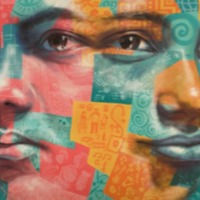
Miracle
There are an estimated 10,000 people living in modern slavery in Lebanon (GSI 2018). Men, women, and children among the estimated 1.3 million Syrian refugees in Lebanon are at high risk of sex trafficking and forced labour. There are some restrictions on Syrians’ ability to work legally in Lebanon and the enforcement of visas and residence permit laws increase this population’s vulnerability to trafficking. Syrians are commonly involved in the exploitation of other Syrians in Lebanon, particularly targeting refugees fleeing the conflict. Syrian children are reportedly vulnerable to forced early marriages—which can lead to commercial sexual exploitation and forced labour—and children displaced within the country continue to be subjected to forced labour, particularly by organized begging rings. Miracle left Nigeria after meeting someone who promised to help her find a job in Europe. On the way she found out she was pregnant and her smuggler attempted to force her to abort the pregnancy. When she arrived in Libya, Miracle and the other girls were locked up and sold to a Madam to be forced into prostitution. However, because Miracle was pregnant, she could not be sold. She spent two months locked inside a room before being taken to boat to cross over to Europe. When she arrived in Europe, she found that she had been deceived by promises of work.
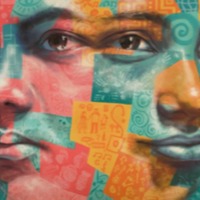
Nora
There are an estimated 145,000 people liing in conditions of modern slavery in Italy (GSI 2018). Italy is a destination, transit, and source country for women, children, and men subjected to sex trafficking and forced labour. Victims originate from Nigeria, Romania, Morocco, China, and other countries. Female victims are often subjected to sex trafficking in Italy after accepting promises of employment as dancers, singers, models, restaurant servers, or caregivers. Romanian and Albanian criminal groups force Eastern European women and girls into commercial sex. Nora’s family was poor and constantly worrying how to make ends meet. One day she met a woman who told her she could arrange a job for her abroad in Europe. Nora thought this was an opportunity to support her family and agreed. Before leaving Nigeria, she and others were required to go through a voodoo ceremony and swear an oath to pay back the woman for travel costs. The route went through Niger and Libya, as soon as they left Nigeria, the woman’s attitude changed. Nora and the other women she travelled with were trafficked into prostitution and forced to work in brothels along their journey in Niger, Libya, and Italy.
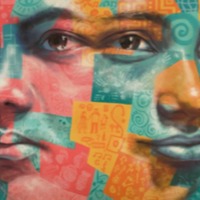
Rita
There are an estimated 145,000 people liing in conditions of modern slavery in Italy (GSI 2018). Italy is a destination, transit, and source country for women, children, and men subjected to sex trafficking and forced labour. Victims originate from Nigeria, Romania, Morocco, China, and other countries. Female victims are often subjected to sex trafficking in Italy after accepting promises of employment as dancers, singers, models, restaurant servers, or caregivers. Romanian and Albanian criminal groups force Eastern European women and girls into commercial sex. Rita was homeless when she was approached by a woman who asked her if she would like to travel and promised to take her to Europe where she could work in her supermarket. Before she left, the woman told Rita the travel costs and made her undergo a voodoo ceremony and swear an oath that she would pay back the money for the journey. As the woman accompanied Rita on the journey from Nigeria through Libya, her attitude began to change. Rita was beaten, abused, and raped by men along the way but the woman did not intervene or protect her. The journey was traumatising, and she saw many people die on the way. Once she arrived in Florence, instead of the supermarket work she was promised, Rita was forced to work as a prostitute in a brothel to pay back the money she owed. After three months of being locked up in the brothel, she escaped and is now in Germany, but she is still being threatened by the Madam in Italy.
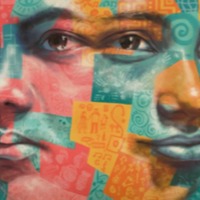
Shola
There is an estimated 48,000 people living in modern slavery in Libya (GSI 2018). Libya is a major transit destination for migrants and refugees hoping to reach Europe by sea. Human trafficking networks have prospered amid lawlessness, created by the warring militias that have been fighting for control of territories since the toppling of Muammar Gaddafi in 2011. Highly organized trafficking and migrants smuggling networks that reach into Libya from Niger, Nigeria, Chad, Eritrea, Ethiopia, Somalia, Sudan, and other sub-Saharan states subject migrants to forced labor and forced prostitution through fraudulent recruitment, confiscation of identity and travel documents, withholding or non-payment of wages, debt bondage, and verbal, physical, and sexual abuse. In some cases, migrants reportedly pay smuggling fees to reach Tripoli, but once they cross the Libyan border they are sometimes abandoned in southern cities or the desert where they are susceptible to severe forms of abuse and human trafficking. Shola was unhappy with her life in Nigeria. She wanted to study and get a job, but when she finished secondary school, her family expected her to marry, have children, and be a housewife. She decided to go to Europe to realize her plans. A woman promised to take her there, and she departed with a group of girls, taking the Libya route. Once in Libya, Shola and the other girls were told they would have to work before they crossed. They were forced into prostitution and were beaten if they refused. Shola and some others escaped from their sexual exploitation with the help of a man, but while living with him they were put to work in other people’s homes.
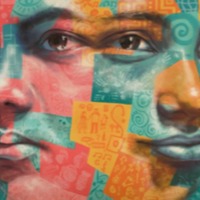
Suleiman
There is an estimated 48,000 people living in modern slavery in Libya (GSI 2018). Libya is a major transit destination for migrants and refugees hoping to reach Europe by sea. Human trafficking networks have prospered amid lawlessness, created by the warring militias that have been fighting for control of territories since the toppling of Muammar Gaddafi in 2011. Highly organized trafficking and migrants smuggling networks that reach into Libya from Niger, Nigeria, Chad, Eritrea, Ethiopia, Somalia, Sudan, and other sub-Saharan states subject migrants to forced labor and forced prostitution through fraudulent recruitment, confiscation of identity and travel documents, withholding or non-payment of wages, debt bondage, and verbal, physical, and sexual abuse. In some cases, migrants reportedly pay smuggling fees to reach Tripoli, but once they cross the Libyan border they are sometimes abandoned in southern cities or the desert where they are susceptible to severe forms of abuse and human trafficking. Suleiman travelled from Sudan to Egypt and from there was smuggled into Libya with his brother. Upon arrival they were held in a warehouse for three days before being released and going to Tobruk. Thinking they were being taken to Tripoli, they were shut inside a van with no view to the outside and arrived instead on a farm. A ransom of 15,000 Libyan dinars was demanded from each person for their release. They were stripped of their clothes, beaten, submitted to electrocutions and burnings while being weakened from hunger and thirst.
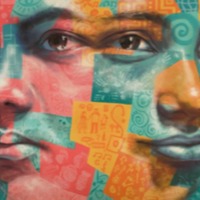
Vanessa
There is an estimated 48,000 people living in modern slavery in Libya (GSI 2018). Libya is a major transit destination for migrants and refugees hoping to reach Europe by sea. Human trafficking networks have prospered amid lawlessness, created by the warring militias that have been fighting for control of territories since the toppling of Muammar Gaddafi in 2011. Highly organized trafficking and migrants smuggling networks that reach into Libya from Niger, Nigeria, Chad, Eritrea, Ethiopia, Somalia, Sudan, and other sub-Saharan states subject migrants to forced labor and forced prostitution through fraudulent recruitment, confiscation of identity and travel documents, withholding or non-payment of wages, debt bondage, and verbal, physical, and sexual abuse. In some cases, migrants reportedly pay smuggling fees to reach Tripoli, but once they cross the Libyan border they are sometimes abandoned in southern cities or the desert where they are susceptible to severe forms of abuse and human trafficking. In Nigeria, Vanessa struggled to house and feed herself and her three children after being thrown out of their home by her abusive husband. She worked as a hawker, selling fruit, and as a hairdresser, but worried constantly about money. Then a friend mentioned a sister in Italy with a hairdressing salon and recommended Vanessa to work there. She was told it would be an easy journey through Libya, however after arriving in Tripoli, Vanessa and her fellow travellers were housed in a smuggler’s compound when a fight broke out among neighbourhood gangs. During this time, her baby developed a fever and became critically ill, dying shortly afterward. She set off from Tripoli on a smuggler’s boat headed for Italy, but the boat was captured by bandits who took them back to Libya and held the passengers for ransom. Vanessa’s friend's sister in Italy paid for her release, but she was unable to make it to Italy. When she tried for a second time, she was caught by the Libyan Coast Guard, brought back, and imprisoned. A Ghanaian man bailed her out of prison only to sell her to a brothel where she had to work as a prostitute to pay off her debt.
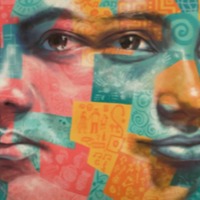
Vera
There is an estimated 48,000 people living in modern slavery in Libya (GSI 2018). Libya is a major transit destination for migrants and refugees hoping to reach Europe by sea. Human trafficking networks have prospered amid lawlessness, created by the warring militias that have been fighting for control of territories since the toppling of Muammar Gaddafi in 2011. Highly organized trafficking and migrants smuggling networks that reach into Libya from Niger, Nigeria, Chad, Eritrea, Ethiopia, Somalia, Sudan, and other sub-Saharan states subject migrants to forced labor and forced prostitution through fraudulent recruitment, confiscation of identity and travel documents, withholding or non-payment of wages, debt bondage, and verbal, physical, and sexual abuse. In some cases, migrants reportedly pay smuggling fees to reach Tripoli, but once they cross the Libyan border they are sometimes abandoned in southern cities or the desert where they are susceptible to severe forms of abuse and human trafficking. At her school in Nigeria, Vera and her brother were being threatened by gangsters. The situation became dangerous, and her mother was very worried about her security. Vera felt she had no other option than to flee from the country. She contacted a smuggler who would take her to Europe via Libya. She was surprised when the woman frankly suggested that she could earn money both in Libya and in Europe as a prostitute. Vera said she would not do such a thing, and the woman did not press the issue. When they arrived in Libya, she called her and told her that now, she must work as a prostitute to pay her debt.
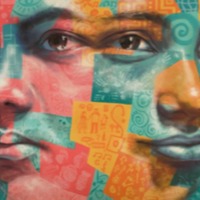
Mina S.
There are an estimated 61,000 people living in modern slavery in Saudi Arabia (GSI 2018). It is a source and destination country for men and women trafficked from South and South East Asia and Africa. People voluntarily migrate to the country to work in a variety of sectors including construction and domestic service; many of these workers are vulnerable to forced labour. Traffickers and brokers often illegally recruit migrants to work in Saudi Arabia and subsequently forced them into domestic servitude or debt bondage. Female domestic workers are particularly at risk of trafficking due to their isolation inside private residences. Non-payment or late payment of wages remains a complaint from foreign workers, while employer's withholding of worker's passports remains a significant problem. Trafficking perpetrators include businesses of all sizes, private families, recruitment companies in both Saudi Arabia and labor-sending countries, and organized criminal elements. Mina S., an Indonesian domestic worker travelled to Saudi Arabia for work. She was forced to work long hours without pay and was beaten by her employer. Mina was locked in the house and had to escape through a ventilation hole in the bathroom.
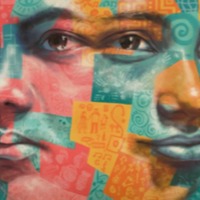
Fathima S.
There are an estimated 61,000 people living in modern slavery in Saudi Arabia (GSI 2018). It is a source and destination country for men and women trafficked from South and South East Asia and Africa. People voluntarily migrate to the country to work in a variety of sectors including construction and domestic service; many of these workers are vulnerable to forced labour. Traffickers and brokers often illegally recruit migrants to work in Saudi Arabia and subsequently forced them into domestic servitude or debt bondage. Female domestic workers are particularly at risk of trafficking due to their isolation inside private residences. Non-payment or late payment of wages remains a complaint from foreign workers, while employer's withholding of worker's passports remains a significant problem. Trafficking perpetrators include businesses of all sizes, private families, recruitment companies in both Saudi Arabia and labor-sending countries and organized criminal elements. Fathima S. travelled from Sri Lanka to Saudi Arabia for domestic work through an agent. She worked for a woman who consistently found fault with her work. Her employer called the recruitment agency who threatened to beat Fathima if she did not work to her employer’s satisfaction. Fathima asked for a new employer but was denied and was forced to continue working long hours for inadequate pay.
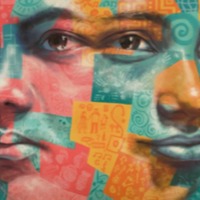
Y
There are an estimated 136,000 people living on conditions of modern slavery in the United Kingdom (Global Slavery Index 2018). According to the 2017 annual figures provided by the National Crime Agency, 5, 145 potential victims of modern slavery were referred through the National Referral Mechanism in 2017, of whom 2,454 were female, 2688 were male and 3 were transgender, with 41% of all referrals being children at the time of exploitation. People are subjected to slavery in the UK in the form of domestic servitude, labour exploitation, organ harvesting and sexual exploitation, with the largest number of potential victims originating from Albania, China, Vietnam and Nigeria. This data however does not consider the unknown numbers of victims that are not reported. Y was trafficked from Nigeria to the United Kingdom at five years old. She was forced to clean, prevented from leaving the house or going to school and made to look after the family’s baby. Y was physically, emotionally and mentally abused by the family that had bought her. When she was 11, the family moved back to Nigeria and sold Y to their friend. She remained in the UK and was forced to work long hours doing housework. When she was 14, she was also forced to make cakes for the woman to sell and make money. She finally ran away and went to live with a foster family while the police and social services worked on her case.
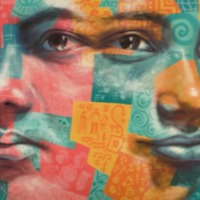
Tanya
The Global Slavery Index 2018 estimates that on any given day in 2016, an estimated 3.6 million men, women and chidlren were living in modern slavery in Europe and Central Asia (GSI 2018). People are subjected to exploitation in forced labour, debt bondage and forced sexual exploitation. Government response in Europe is particularly strong with a number of regional bodies holding them account and monitoring responses, and while countries in Central Asia have taken steps to tack modern slavery, more needs to be done. Tanya was trafficked from Ukraine after being offered a job in another country. Her brother was sick and in need of an operation and her family was poor. She was sold and forced into prostitution.
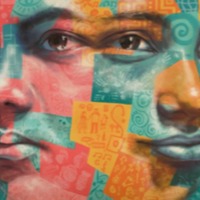
Melody
There are an estimated 136,000 people living on conditions of modern slavery in the United Kingdom (Global Slavery Index 2018). According to the 2017 annual figures provided by the National Crime Agency, 5, 145 potential victims of modern slavery were referred through the National Referral Mechanism in 2017, of whom 2,454 were female, 2688 were male and 3 were transgender, with 41% of all referrals being children at the time of exploitation. People are subjected to slavery in the UK in the form of domestic servitude, labour exploitation, organ harvesting and sexual exploitation, with the largest number of potential victims originating from Albania, China, Vietnam and Nigeria. This data however does not consider the unknown numbers of victims that are not reported. Melody was brought from Nigeria to the UK by a family friend at 12 years old. Upon arrival she was taken to a woman’s house where she was forced to clean every day for long hours under constant verbal abuse. This woman started bringing men to the house to sexually abuse Melody. Melody was kicked out of the house one day when she refused to sleep with one of the men the woman had brought to her. She spent months homeless on the street where she was subjected to further sexual violence. She was finally able to leave her situation with the help of an advisor from Refugee Council.
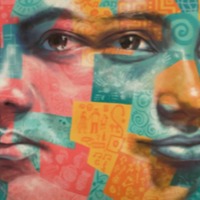
Stella
There are an estimated 136,000 people living on conditions of modern slavery in the United Kingdom (Global Slavery Index 2018). According to the 2017 annual figures provided by the National Crime Agency, 5, 145 potential victims of modern slavery were referred through the National Referral Mechanism in 2017, of whom 2,454 were female, 2688 were male and 3 were transgender, with 41% of all referrals being children at the time of exploitation. People are subjected to slavery in the UK in the form of domestic servitude, labour exploitation, organ harvesting and sexual exploitation, with the largest number of potential victims originating from Albania, China, Vietnam and Nigeria. This data however does not consider the unknown numbers of victims that are not reported. Stella travelled from the Philippines to the United Kingdom for work as a domestic worker. However, her labour was exploited, and she was physically abused by her employer.
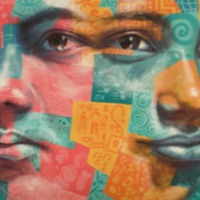
Katia
There are an estimated 509,000 people living in modern slavery in Turkey (GSI 2018). As a source, transit and destination location for immigration, human trafficking is prevalent in the country. Trafficking victims in Turkey are primarily from Central and South Asia, Eastern Europe, Azerbaijan, Indonesia, Morocco, and Syria. Women are mainly trafficked to Turkey as sex workers. Katia was trafficked into commercial sexual exploitation from Ukraine to Turkey. She was drugged and beaten and forced to sleep with men against her will on a daily basis.
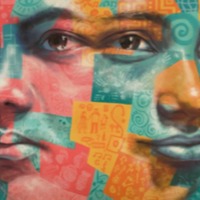
Rahat
There are an estimated 1.22 million people living in conditions of modern slavery in Indonesia (GSI 2018). Traffickers exploit both domestic and foreign victims in Indonesia. Government regulations allow employers in certain sections, including small and medium enterprises and labour-intensive industries, an exemption from minimum wage requirement, thus increasing risks of exploitation. Traffickers exploit many Indonesians through force and debt-coercion. Men, women and children are exploited in fishing, construction, on plantations, in mining and in manufacturing industries. Vessel crew on board Chinese, Korean, Vanuatuan, Taiwan, Thai, Malaysian and Philippines-flagged and/or owned fishing vessels operating in Indonesian waters subject fisherman to forced labour. Recruitment agencies lure people with promises of high wages, charge fees, assign them fake identities and labor permit documents and send them to fish long hours in waters on vessels operating under complex multinational flagging and ownership arrangements. Crews on board fishing vessels have reported low or unpaid salaries and coercive tactics such as contract discrepancies, document retention, restricted communication, poor living and working conditions, threats of violence and physical and sexual abused. Rahat was looking for work when he was encouraged by a friend to travel to Bangkok for work. He was told he would be able to make more money at sea than on land, however instead he was trafficked on to a fishing trawler in Indonesia. Conditions on the boat were awful, there was not enough food to last the crew and they were subjected to beating if they were ‘lazy.’

Shamere McKenzie (Narrative 2)
There are an estimated 403,000 people living in modern slavery in the United States (GSI 2018). Sex trafficking exists throughout the country. Traffickers use violence, threats, lies, debt bondage and other forms of coercion to compel adults and children to engage in commercial sex acts against their will. The situations that sex trafficking victims face vary, many victims become romantically involved with someone who then forces them into prostitution. Others are lured with false promises of a job, and some are forced to sell sex by members of their own families. Victims of sex trafficking include both foreign nationals and US citizens, with women making up the majority of those trafficked for the purposes of commercial sexual exploitation. In 2015, the most reported venues/industries for sex trafficking included commercial-front brothels, hotel/motel-based trafficking, online advertisements with unknown locations, residential brothels, and street-based sex trafficking. Shamere McKenzie came to the US from Jamaica when she was 6 years old. A talented track star, she was running at college level when she injured her hamstring. With her scholarship in jeopardy, she met someone who said they could help her return to school, all she had to do was dance at his nightclub. One evening, however, Shamere was taken to a house in Brooklyn where she was told to have sex with a customer. When she refused, her trafficker threatened her life, and when she tried to leave when they returned home he beat her to unconsciousness. For eighteen months Shamere McKenzie was forced in to prostitution and trafficked across five different states under constant threats of violence. She finally escaped when her trafficker allowed her to call her mother and she was able to get a flight back to New York.
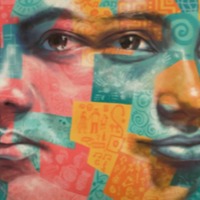
V.P.
There are an estimated 145,000 people living in conditions of modern slavery in Italy (GSI 2018). Italy is a destination, transit, and source country for women, children, and men subjected to sex trafficking and forced labour. Victims originate from Nigeria, Romania, Morocco, China, and other countries. Female victims are often subjected to sex trafficking in Italy after accepting promises of employment as dancers, singers, models, restaurant servers, or caregivers. Romanian and Albanian criminal groups force Eastern European women and girls into commercial sex. V.P. travelled to Greece for work when she was 16 years old where she was introduced to a man who promised to marry her. Instead he forced her into prostitution, forcing her to work up to 12hrs and beating her daily. After 2 years V.P. was able to escape and came back to Albania. However, unable to find work she left Albania for Italy where she was exploited as a prostitute for a second time.